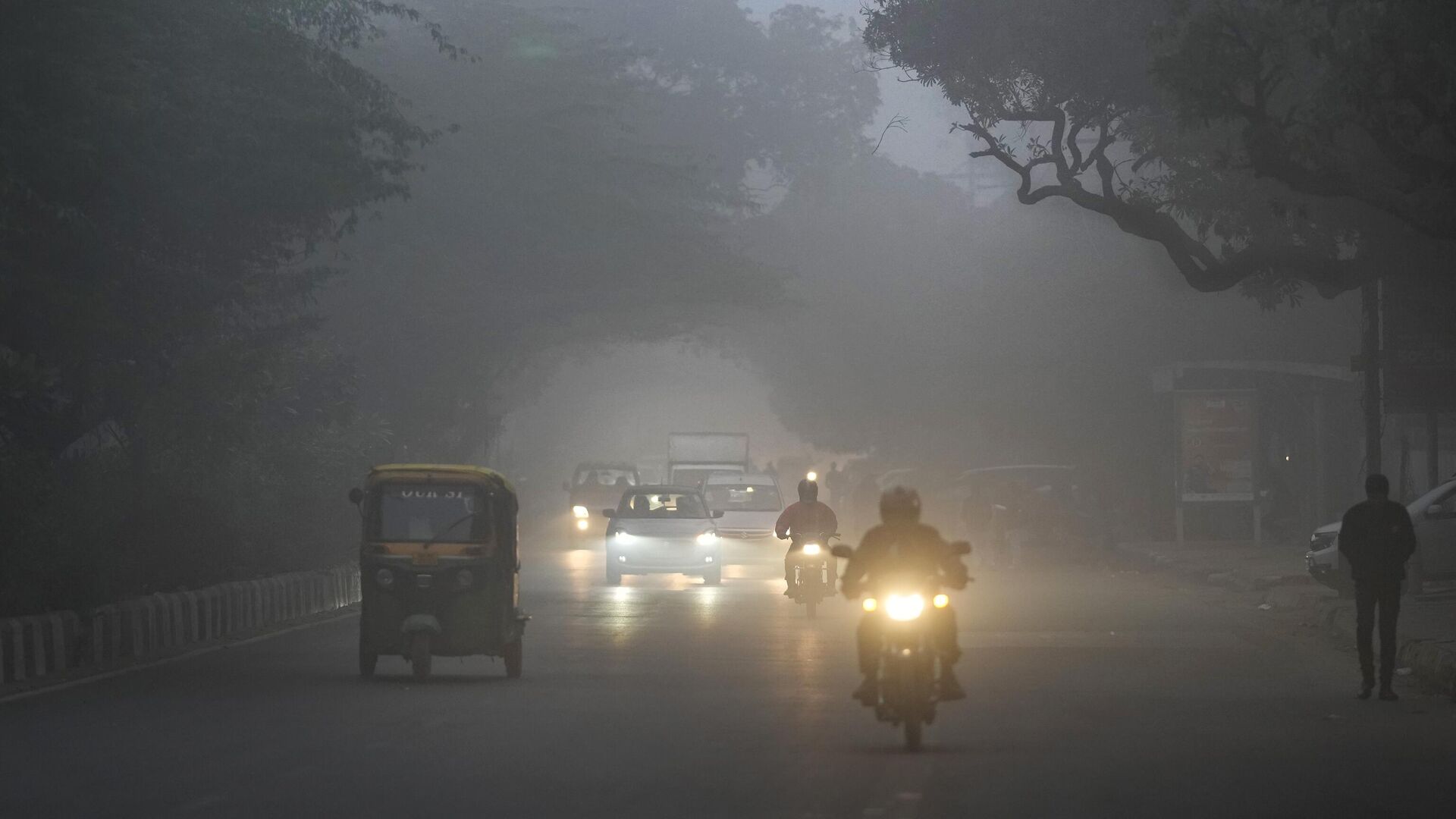https://sputniknews.in/20221220/delhi-airport-launches-low-visibility-plan-as-dense-fog-engulfs-city-156979.html
Delhi Airport Launches Low Visibility Plan as Dense Fog Engulfs City
Delhi Airport Launches Low Visibility Plan as Dense Fog Engulfs City
Sputnik India
The first dense fog of the winter season covered Delhi and several other northern states on Monday. 20.12.2022, Sputnik India
2022-12-20T13:39+0530
2022-12-20T13:39+0530
2022-12-20T15:33+0530
delhi
india
https://cdn1.img.sputniknews.in/img/07e6/0c/14/159726_0:320:3073:2048_1920x0_80_0_0_63911b24759f9c620f28ccc21ce5799a.jpg
Delhi’s Indira Gandhi International Airport on Tuesday put into operation a low visibility plan as India's capital remained engulfed in dense fog.In a string of tweets made within only a few hours, Delhi Airport announced that low visibility procedures were being implemented. However, it noted that flights have not been affected.A passenger shared a pre-sunrise video showing aircrafts on the tarmac in thick fog, with visibility of only a few meters.An accident was also reported to have occurred on the Yamuna Expressway in Uttar Pradesh state's city Noida.The India Meteorological Department reported visibility of 50 meters in Safdarjung area of Delhi at 5.30 am (IST) (00:00 GMT).Satellite imagery showed dense to very dense fog in the states of Punjab, Haryana, Uttar Pradesh and northern Rajasthan, as well as in the union territories of Chandigarh and Delhi. In Delhi, the air quality levels were registered in the very poor category at 7:00am, as the mercury continues to drop in the north of the country.The air quality index around Indira Gandhi International airport was 378 on Tuesday, according to the System of Air Quality and Weather Forecasting and Research (SAFAR). An Air Quality Index from 0 to 100 is considered good, from 100 to 200 is moderate, from 200 to 300 is poor, from 300 to 400 is very poor, and from 400 to 500 or above is considered severe.
delhi
india
Sputnik India
feedback.hindi@sputniknews.com
+74956456601
MIA „Rossiya Segodnya“
2022
Rahul Trivedi
https://cdn1.img.sputniknews.in/img/07e6/0c/13/136500_0:0:628:627_100x100_80_0_0_72097ff894c7446b70d2efafcb719720.jpg
Rahul Trivedi
https://cdn1.img.sputniknews.in/img/07e6/0c/13/136500_0:0:628:627_100x100_80_0_0_72097ff894c7446b70d2efafcb719720.jpg
News
en_IN
Sputnik India
feedback.hindi@sputniknews.com
+74956456601
MIA „Rossiya Segodnya“
Sputnik India
feedback.hindi@sputniknews.com
+74956456601
MIA „Rossiya Segodnya“
Rahul Trivedi
https://cdn1.img.sputniknews.in/img/07e6/0c/13/136500_0:0:628:627_100x100_80_0_0_72097ff894c7446b70d2efafcb719720.jpg
delhi fog, indira gandhi international airport, yamuna expressway
delhi fog, indira gandhi international airport, yamuna expressway
Delhi Airport Launches Low Visibility Plan as Dense Fog Engulfs City
13:39 20.12.2022 (Updated: 15:33 20.12.2022) The first dense fog of the winter season covered Delhi and several other northern states on Monday.
Delhi’s Indira Gandhi International Airport on Tuesday put into operation a low visibility plan as India's capital remained engulfed in dense fog.
In a string of tweets made within only a few hours, Delhi Airport announced that low visibility procedures were being implemented. However, it noted that flights have not been affected.
A passenger shared a pre-sunrise video showing aircrafts on the tarmac in thick fog, with visibility of only a few meters.
An accident was also reported to have occurred on the Yamuna Expressway in Uttar Pradesh state's city Noida.
The India Meteorological Department reported visibility of 50 meters in Safdarjung area of Delhi at 5.30 am (IST) (00:00 GMT).
Satellite imagery showed dense to very dense fog in the states of Punjab, Haryana, Uttar Pradesh and northern Rajasthan, as well as in the union territories of Chandigarh and Delhi.
In Delhi, the
air quality levels were registered in the very poor category at 7:00am, as the mercury continues to drop in the north of the country.
The air quality index around Indira Gandhi International airport was 378 on Tuesday, according to the System of Air Quality and Weather Forecasting and Research (SAFAR).
An Air Quality Index from 0 to 100 is considered good, from 100 to 200 is moderate, from 200 to 300 is poor, from 300 to 400 is very poor, and from 400 to 500 or above is considered severe.


